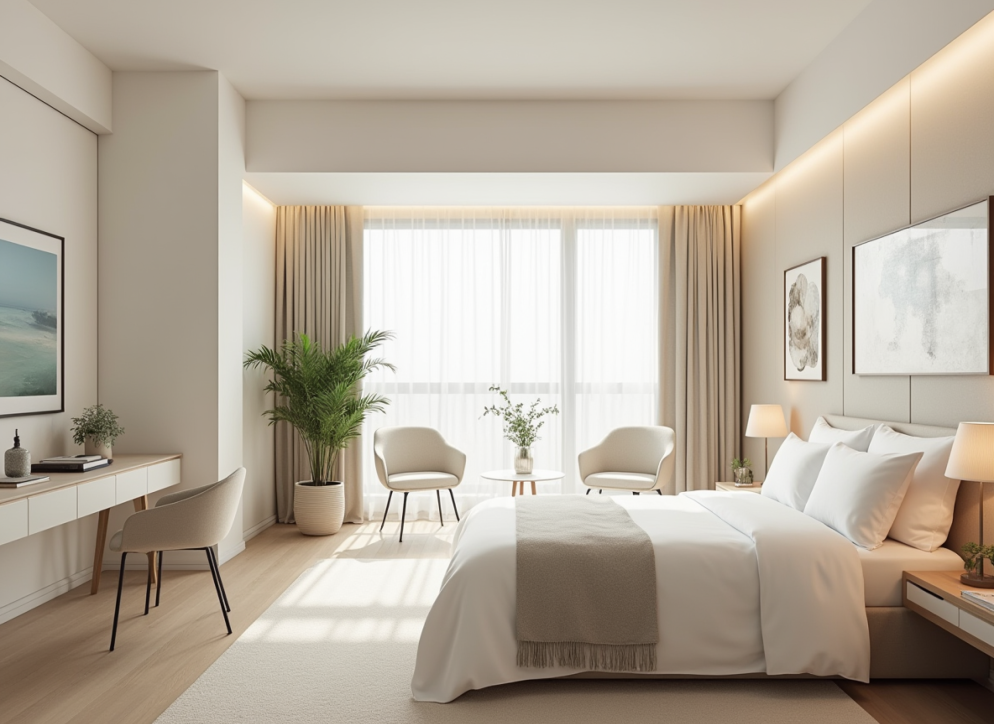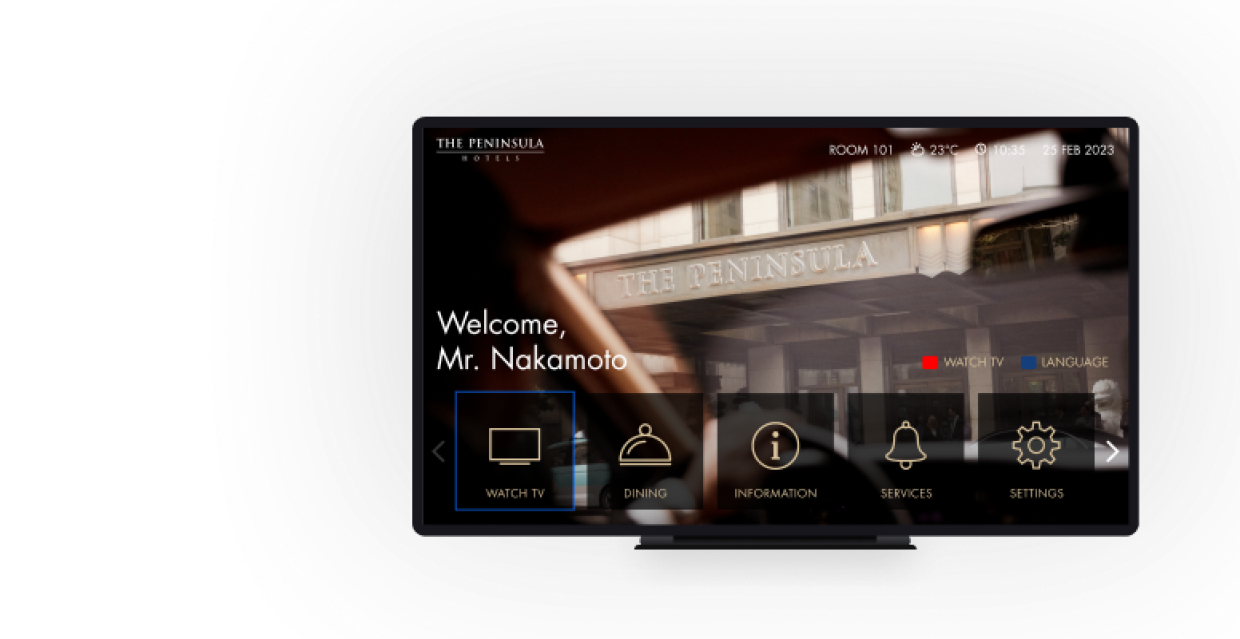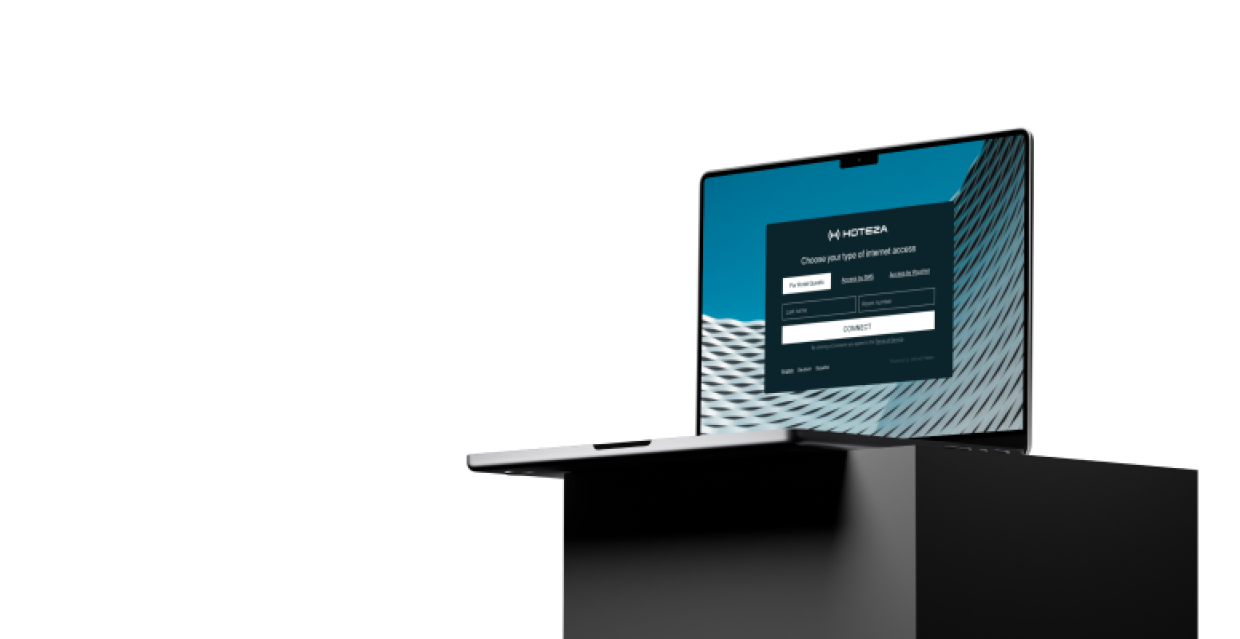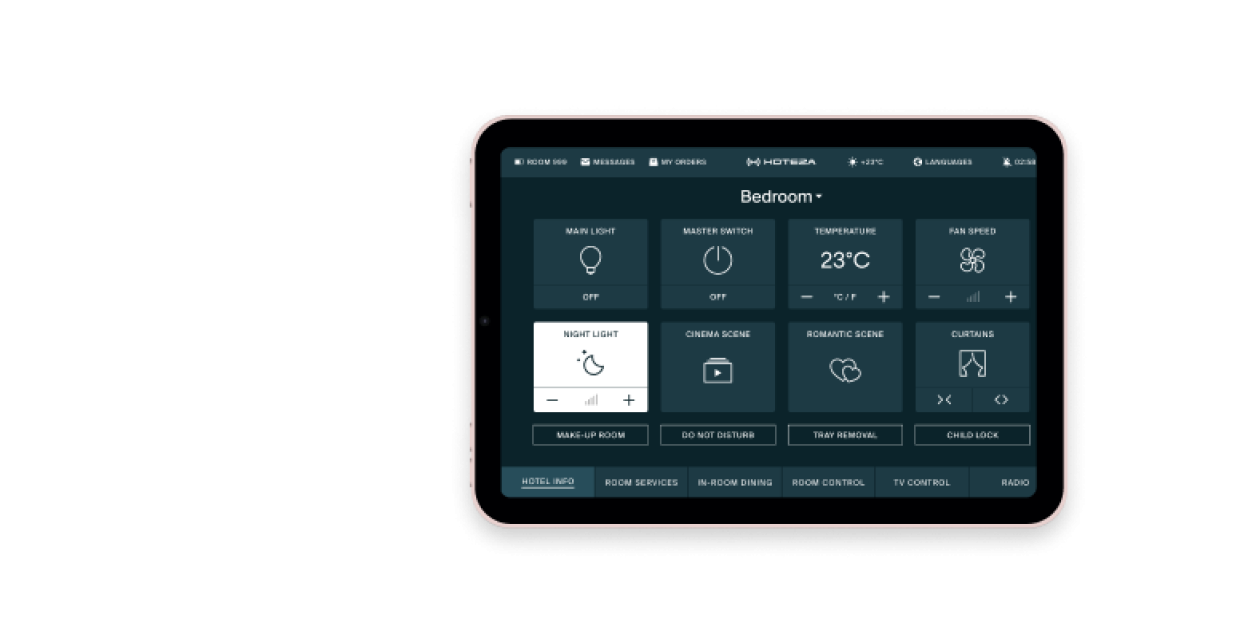23.09.2025
A Guide to Room Categories: Everything You Wanted to Know, but Never Wanted to Ask
Have you ever opened a booking site, or even a hotel page, wondering about the type of room you are actually looking to get? No matter how you reached this page, keep reading to find out everything you wanted to know about room types, categories, and classification.

Have you ever opened a booking site, or even a hotel page, wondering about the type of room you are actually looking to get? Most guests face this problem, confronting the first stressful moment of what could have been a fun trip planning experience when the engine prompts them to choose their accommodation and specify their wishes, which might pose a challenge. On the other hand, hotel managers, owners, and professionals have a clear understanding of hotel room types and are fully aware that they are not just labels; they represent inventory management, upselling opportunities, standards they must uphold, and, of course, the expectations of their guests, which they must surely meet. No matter how you reached this page, keep reading to find out everything you wanted to know about room types, categories, and classification.
What is a Room Type, and Why Does it Matter in Hospitality?
Standard twin, deluxe suite, or presidential might all sound like typical marketing jargon created to sell, but it’s so much more than this. Actually, it’s a pivotal factor for hotel success. Why? In simple terms, a well-organized room classification system can streamline everything from operations to revenue strategy, while ensuring that guests understand what they are booking and what they are getting. This understanding is crucial in ensuring guest satisfaction and a positive experience.
Impact on Operations, Inventory, and Revenue Management
Inventory Management
By precisely labeling each room type, your front-desk and housekeeping staff know exactly what’s available and what needs attention. Instead of treating all rooms the same, each category — whether it’s a single, suite, or accessible room — can be managed more efficiently.
Revenue Optimization
Having multiple hotel room types allows you to upsell effectively. Guests who prefer extra space or added amenities may be willing to pay a premium for these perks. When these room distinctions are clearly defined, it’s easier to market them at different price points.
Forecasting and Demand Planning
If you see that junior suites are consistently selling out, you can adjust pricing or allocate more marketing efforts toward similar categories. A precise classification helps identify patterns in guest preferences, making data-driven decisions more accurate and informed.
Impact on Guest Expectations and Marketing
Clarity and Trust
Guests appreciate knowing exactly what they’re booking. If your website or booking platform clearly lists room features, such as bed size, view, or living space, guests are less likely to feel misled. This clarity builds trust and can lead to positive reviews.
Guest Satisfaction
There’s nothing worse than a guest arriving with certain expectations, say, expecting a king-sized bed, only to discover a different configuration. When room types are clearly spelled out, you reduce the risk of surprises and ensure guests start their stay on a positive note.
Targeted Marketing Campaigns
Different types of travelers, such as business versus leisure, couples versus families, tend to gravitate toward different room types. Highlighting, for example, your spacious suites or family-friendly quad rooms can help attract the right audience.
Most Common Hotel Room Types, Explained
While we can understand how room classification benefits hotels and their guests, let’s delve into the basics of how hotel rooms are actually named and classified. Below, we’ll explore the various common room types, along with a brief explanation of each.
Single, Double, Twin, Triple, and Quad Rooms
Single Room
A single room typically features one twin or single bed. It’s an excellent choice for solo travelers or business guests who only need minimal space.
Double Room
A double room typically features one double bed and is designed for two people. Depending on the property, this might be a full-size or queen bed.
Twin Room
A twin room offers two separate beds in the same space, perfect for friends or colleagues traveling together who prefer their own sleeping space.
Triple and Quad Rooms
For groups or families, triple rooms offer sleeping arrangements for three individuals, typically featuring either three single beds or a combination of one double bed and one single bed. Quad rooms can accommodate four guests, with configurations that include two double beds or a combination of single and double beds.
Suites: Junior, Executive, Presidential, etc.
Junior Suite
Typically, a junior suite features a larger sitting area attached to the bedroom, often separated by a partial divider. It’s a step up from a standard room, offering a bit more room to relax.
Executive or Club Suite
Executive suites are larger than junior suites and may have an entirely separate living room, additional workspace, and upgraded amenities. They often come with executive lounge access or other premium perks if you’re part of a larger hotel chain.
Presidential or Royal Suite
The top-tier suite in most hotels is spacious, luxurious, and equipped with a range of amenities. Expect multiple bedrooms, bathrooms, a dining area, panoramic views, and sometimes even private butler service. These suites are perfect for VIPs or special occasion stays.
Deluxe, Superior, and Standard Room Classifications
Standard Room: Consider this the baseline category. A standard room typically features basic amenities and a simple layout, providing enough space for travelers on a budget or those who don’t require extra amenities.
Superior Room: A level above the standard, these rooms offer better views, more modern furniture, or are situated in a quieter part of the hotel.
Deluxe Room: Deluxe indicates a step up from Superior, potentially featuring more space, higher-end furnishings, or extra in-room amenities such as a coffee maker, plush robes, or a seating area.
These classifications can vary significantly between brands, so it’s crucial to define them clearly in your own hotel room type classification system.
Accessible and Connecting Rooms
Accessible Rooms
These are designed to meet the needs of guests with mobility or other accessibility challenges. Features include wider doorways, grab bars in the bathroom, a roll-in shower, and lower light switches or countertops. Providing accessible options isn’t just about compliance; it demonstrates genuine inclusivity and care.
Connecting or Adjoining Rooms
Families or larger groups often appreciate the convenience of connecting rooms, which share a private door between them. Adjoining rooms, meanwhile, are next to each other but do not share a connecting door. Clear labeling helps avoid confusion and ensures guests who want these options can easily find them.
The Biggest Differentiators: Beds and Layouts
Now that we’ve touched on the basic categories of standards, suites, and the like, we are moving towards the major differentiators: beds and layouts. It shouldn’t come as a surprise that many guests choose their room based simply on the bed type, as it’s one of the easiest ways to find clear distinctions.
King, Queen, Twin, and Sofa Beds
King Bed
In Europe, a king-size bed usually measures 180 cm wide by 200 cm long (approximately 71 inches by 79 inches). This bed provides ample space for couples or individuals who like room to stretch out.
Queen Bed
A queen bed in Europe typically measures 160 cm (approximately 63 inches) in width by 200 cm (approximately 79 inches) in length. It’s still a comfortable option for two people and is often found in standard hotel rooms.
Twin Beds
Each twin bed in Europe generally measures 90 cm wide by 200 cm long (approximately 35 inches by 79 inches). When two twin beds are in a room, each occupant gets their own sleeping space.
Sofa Beds
Sofa beds in Europe offer flexibility, converting a living area into an extra sleeping space. The sizes vary, but a typical sofa bed mattress can range from 120 cm to 160 cm in width by 200 cm in length (approximately 47 inches to 63 inches by 79 inches), depending on the model. Sofa beds are ideal for families or groups who need extra space without booking multiple rooms.
Studio Rooms vs. Apartment-Style Accommodations
Studio Room
A studio often combines living and sleeping areas into a single space, featuring a small kitchenette. This setup is especially popular for extended stays, where guests appreciate the added convenience of cooking simple meals.
Apartment or Residence-Style
Some hotels offer complete apartment-like units that can include multiple bedrooms, a full kitchen, a living room, and even a washer-dryer setup. These accommodations are ideal for families, business travelers on extended assignments, or anyone seeking a home-away-from-home experience.
How to Present Room Types Online and In-House
Now that we have gone through various distinguishing features, let’s discuss ways to present room types both online and within your own system. Creating a thorough list of room types is only part of the equation. You also need to communicate these categories effectively across all channels - from your website to your property management system (PMS) and digital marketing platforms. Consistency seems like a logical step, but it can sometimes prove to be a challenge.
Importance of Consistency Across Booking Channels
Okay, let’s give an example. If your website refers to a “Deluxe King Room,” but your PMS labels it as a “Premium King,” confusion can lead to operational errors and guest dissatisfaction. Instead, ensure the naming scheme is uniform across all booking platforms, including online travel agencies (OTAs), your own website, and any third-party booking engines, to prevent mix-ups.
Use Your Digital Tools for Clear Categorization
Many modern PMS and channel managers enable you to define room categories with granular detail, allowing you to add photos and bullet-pointed amenities. This clarity helps:
Front Desk Staff: They’ll know exactly which amenities are included in each room category.
Guests: With a straightforward description and photos, guests are less likely to call or email with basic questions.
Revenue Managers: Detailed categorization helps track which room types sell fastest, enabling real-time pricing adjustments.
Using Interactive TV or Guest App to Highlight Options
Once guests arrive, reinforce the value of your different room types by showcasing them on in-room tablets, interactive TVs, or a mobile guest app. Highlight, for instance, the availability of suite upgrades or the difference between a standard and deluxe room. By visually presenting these options, you encourage spontaneous on-site upgrades and repeat bookings for higher room categories in the future.
Conclusion
Room types can be confusing, both to guests and hotel staff, especially those starting in the industry. That’s why designation and correct promotion are essential. Smooth operations, effective marketing, and most importantly, guest satisfaction all rest on a correctly set room system, in-house and outside. When room types are clearly defined, guests can precisely know what to expect, and your staff knows how to promote it, set the scene, and manage upselling with ease.
Creating an Effortless Guest Booking that goes into an Effortless Stay Experience
From the moment a potential guest scrolls through your online listings to the time they check out, consistent room category labels ensure everyone’s on the same page. When you deliver exactly what you promise, be it a luxurious suite, a spacious double, or an accessible room with all the right features, you lay the groundwork for positive reviews and repeat business.
Future Trends in Hotel Room Type Personalization
We all know technology evolves. And it will continue to do so, while we are likely to see things we did not imagine a decade ago, chances are, it’s only the beginning. Imagine a future where a hotel’s website or app suggests room types based on individual guest history or stated preferences (e.g., “Do you need a quiet space to work?” or “Are you traveling with kids?”). Integrating guest data and preferences into the classification system can lead to truly bespoke experiences—paving the way for higher satisfaction and more robust loyalty programs.











